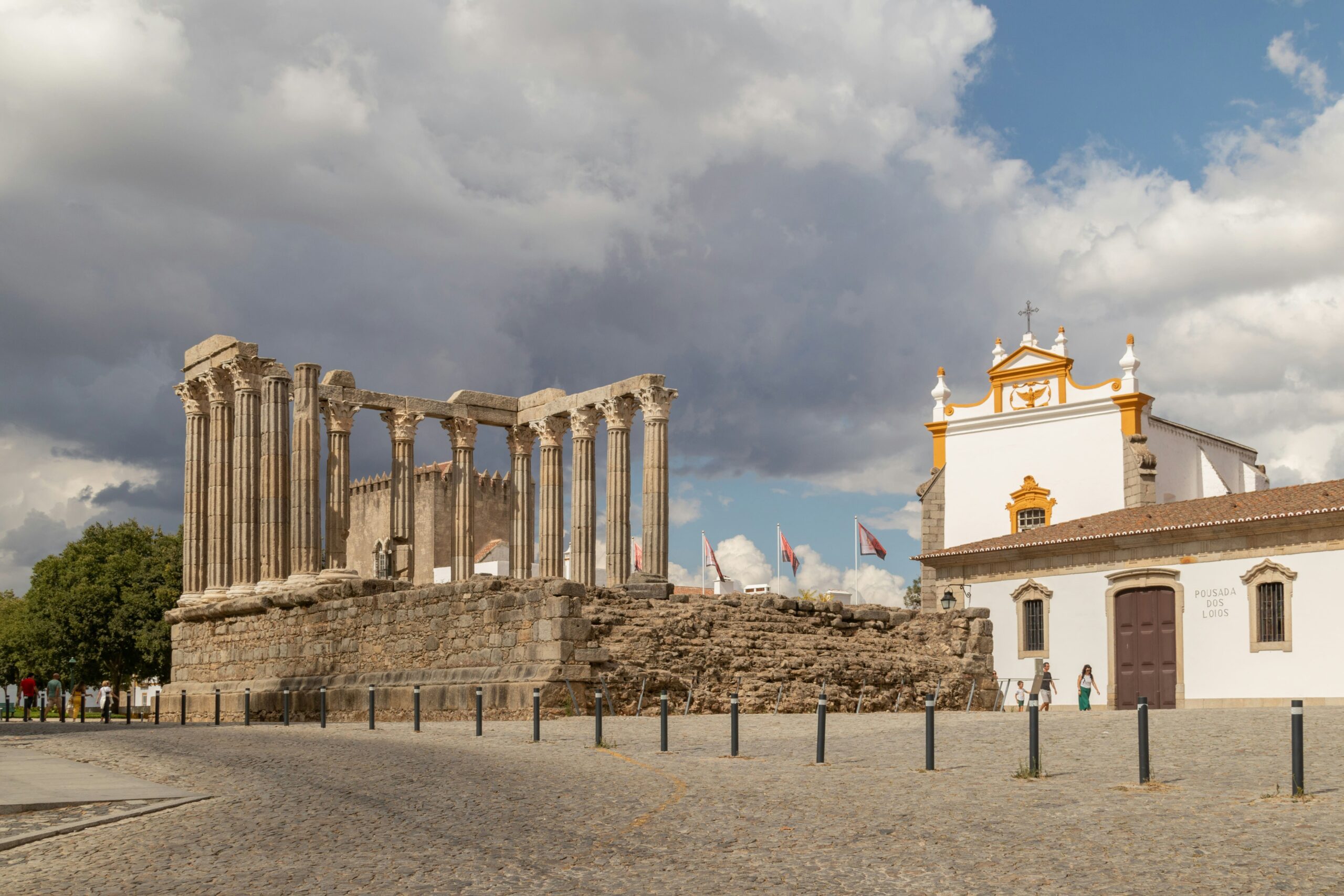
Welcome to the Évora Travel Guide, your key to exploring one of Portugal’s most enchanting cities.
As you begin your journey, you’ll find that Évora is a UNESCO World Heritage Site known for its rich history, stunning architecture, and vibrant culture. With its well-preserved medieval walls, Roman temples, and charming streets, Évora offers a unique blend of past and present, making it a destination you won’t want to miss.
Whether you’re a history buff, a foodie, or a culture lover, this guide will help you discover the best of Évora. So, let’s dive into the wonders of this beautiful city and see why it should be on your travel itinerary!
Originally settled by the Celts, Évora later became an important Roman city, known as “Liberalitas Julia.”
As you explore the city, you’ll notice that Évora flourished under Roman rule, leaving behind landmarks such as the Roman Temple, which still stands today. During the Middle Ages, Évora grew in prominence as a center of learning and culture, particularly during the reign of King Manuel I.
This long history is evident in the city’s architecture, reflecting a blend of Roman, Moorish, and Portuguese influences, making it a fascinating place to visit.
Évora is situated in the heart of the Alentejo region, in southeastern Portugal. Surrounded by vast plains and gently rolling hills, the landscape is characteristic of the Alentejo’s beauty.
Moreover, the area around Évora is known for its agricultural richness, with olive groves, vineyards, and cork oak forests dotting the countryside.
Thanks to its Mediterranean climate, with hot, dry summers and mild winters, Évora is ideal for exploring its natural beauty and outdoor attractions.
This Évora Travel Guide will lead you through the city’s top attractions, activities, and experiences.
Whether you’re drawn to historical landmarks, stunning natural landscapes, or the region’s rich gastronomy, our guide ensures you won’t miss any of Évora’s highlights.
Discover the blend of history, culture, and beauty that makes Évora a must-visit destination in Portugal.
Let’s dive into the wonders of Évora and see why it deserves a spot on your travel itinerary!
The Roman Temple of Évora, also known as the Temple of Diana, is one of the city’s most iconic symbols. This well-preserved temple is a testament to Évora’s rich Roman past.
The Cathedral of Évora (Sé de Évora) is another must-see, offering panoramic views of the city from its rooftop. The Chapel of Bones (Capela dos Ossos) is a macabre yet fascinating site, where the walls are lined with human bones, reminding visitors of the transient nature of life.
Exploring these sites is essential to fully appreciating the depth of history in this Évora Travel Guide.
Jardim Público de Évora is a beautiful park located in the heart of the city, perfect for a relaxing stroll among ancient trees and vibrant flower beds.
Just outside the city, the Almendres Cromlech offers a prehistoric stone circle that is one of the oldest megalithic complexes in Europe.
These natural attractions offer a peaceful retreat from the city’s historic landmarks, providing a perfect balance between history and nature.
No Évora Travel Guide would be complete without highlighting the city’s culinary delights. Évora is a gastronomic hub, offering some of the best flavors of the Alentejo region.
Traditional dishes such as Migas (a traditional bread dish), Açorda Alentejana (a garlic and coriander soup), and Porco Preto (Iberian black pork) are must-tries for any food lover. Pair these with a glass of Alentejo wine, known for its rich and robust flavors, to experience the culinary heart of the region.
The city’s many tascas (traditional taverns) and restaurants provide the perfect setting to indulge in these local delicacies.
Évora is a cultural treasure trove, and this Évora Travel Guide will take you through its best experiences.
The Museum of Évora houses an impressive collection of art and artifacts, offering insights into the city’s history.
Throughout the year, Évora hosts various cultural events, including the Évora Classical Music Festival and Festa de São João, where the streets come alive with music, dance, and traditional celebrations.
Engaging in these cultural experiences will give you a deeper understanding of the local way of life.
The Évora Travel Guide also highlights the city’s vibrant shopping and nightlife scenes.
The Mercado Municipal is a great place to find local produce, handmade crafts, and souvenirs. For art lovers, several local galleries showcase the works of contemporary Portuguese artists.
As the sun sets, Évora’s nightlife comes to life, particularly around Praça do Giraldo, the city’s main square.
Here, you’ll find lively bars, cafés, and Fado houses, where you can enjoy traditional Portuguese music late into the night.
Visiting Évora is an unforgettable experience, offering a perfect blend of history, culture, natural beauty, and gastronomy.
This Évora Travel Guide offers everything you need to maximize your trip, whether you’re exploring ancient landmarks, savoring local cuisine, or enjoying the city’s charming atmosphere.
Évora invites you to step back in time and discover the rich heritage of the Alentejo region.
Book your trip today and experience the magic of Évora for yourself!